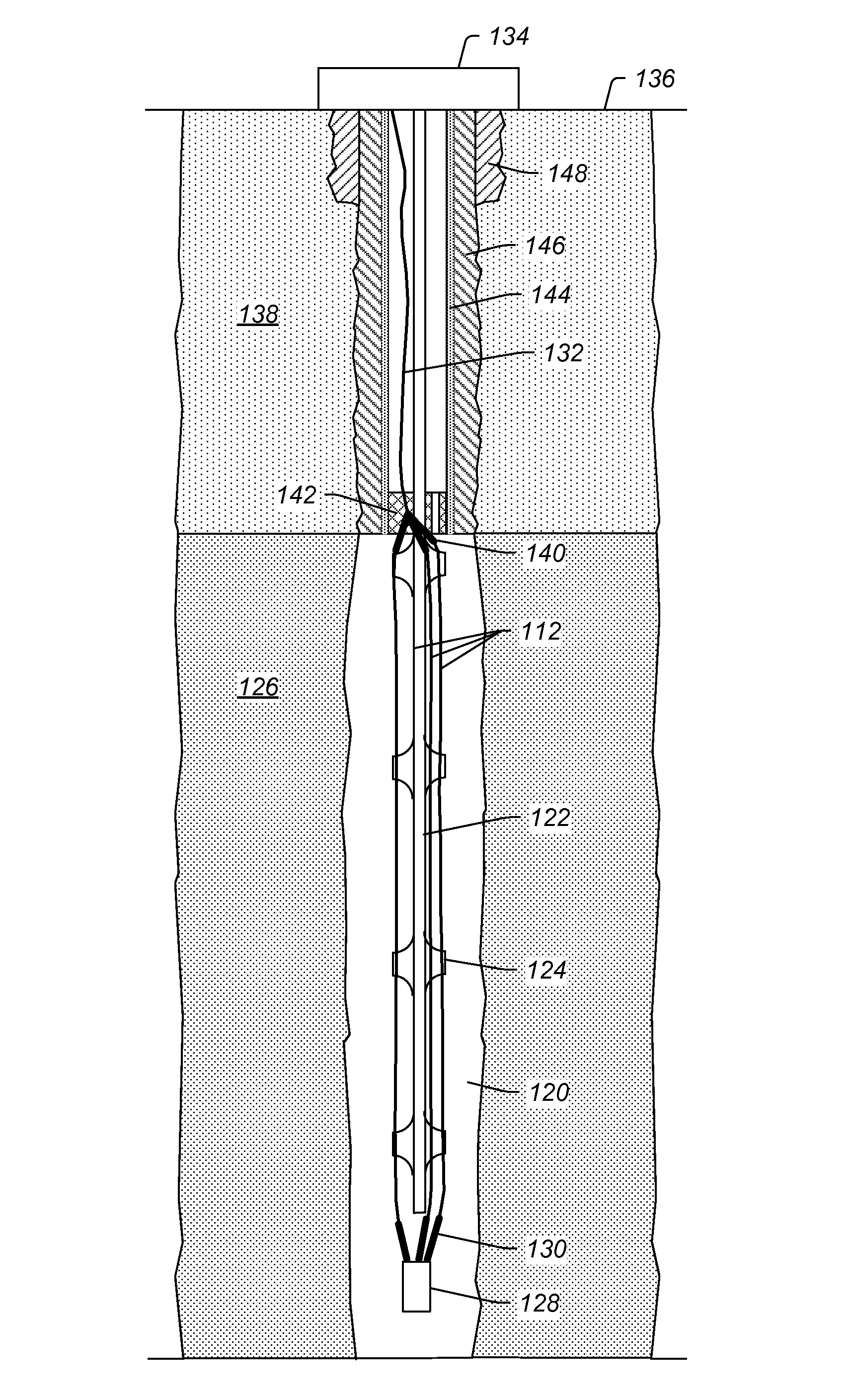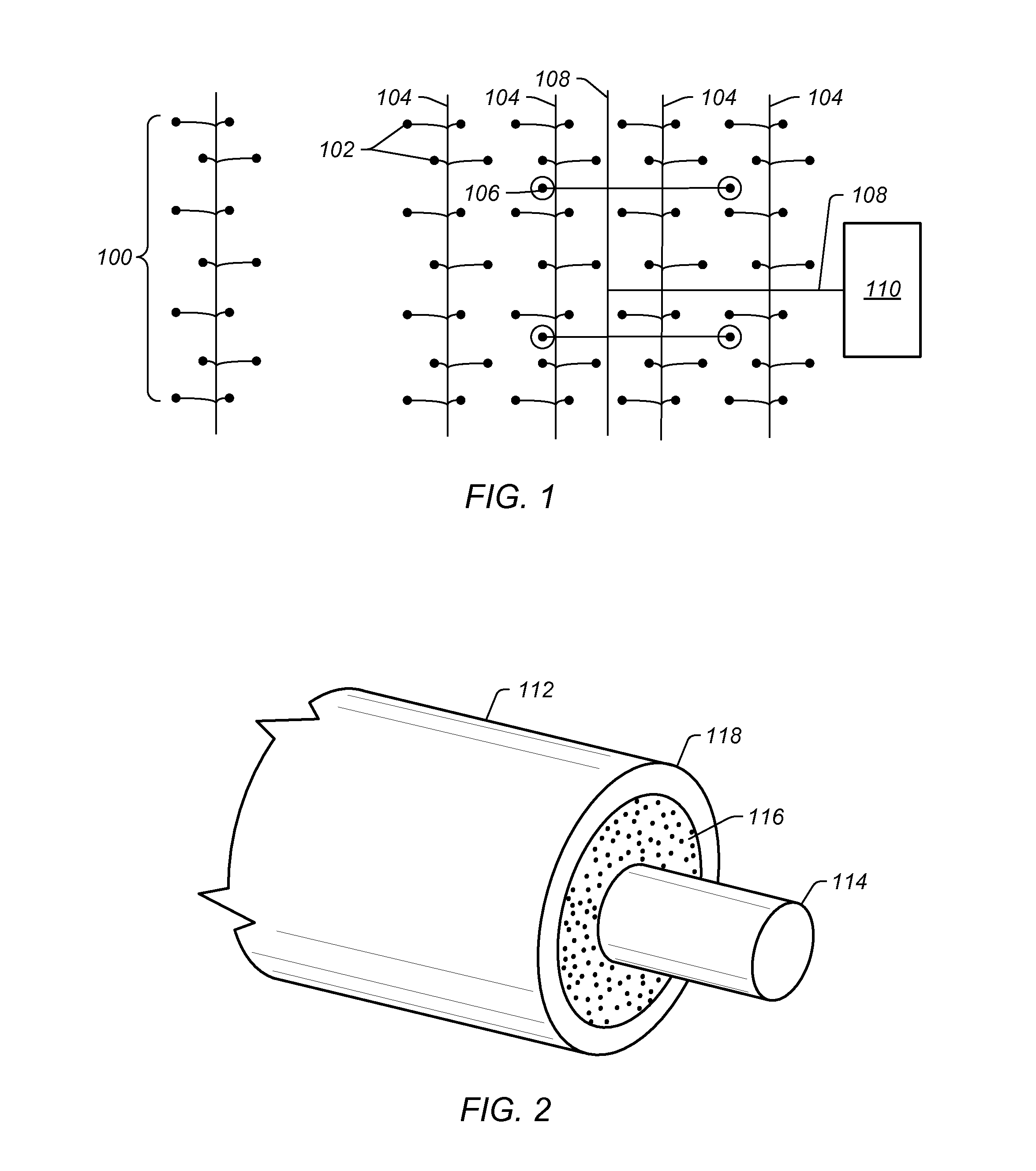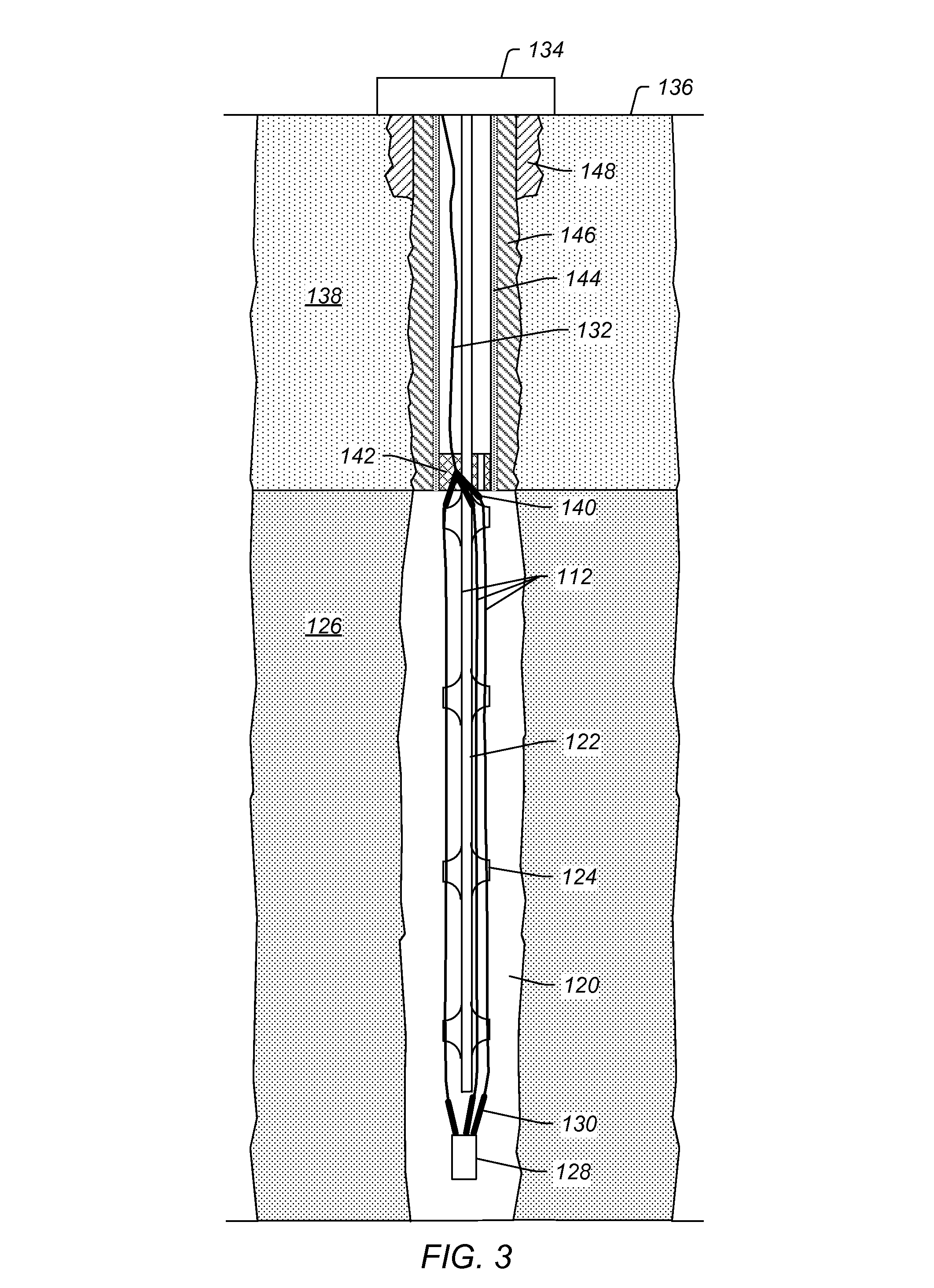Methods for assessing a temperature in a subsurface formation
a technology of subsurface formation and temperature, applied in the direction of heat measurement, instruments, borehole/well accessories, etc., can solve the problems of increasing the risk of failure of one or more thermocouples (or their associated wires), difficulty in implementing typical temperature measurement methods, and increasing the cost of mining and upgrading tar sand
- Summary
- Abstract
- Description
- Claims
- Application Information
AI Technical Summary
Benefits of technology
Problems solved by technology
Method used
Image
Examples
Embodiment Construction
[0038]The following description generally relates to systems and methods for treating hydrocarbons in the formations. Such formations may be treated to yield hydrocarbon products, hydrogen, and other products.
[0039]“Alternating current (AC)” refers to a time-varying current that reverses direction substantially sinusoidally. AC produces skin effect electricity flow in a ferromagnetic conductor.
[0040]“Annular region” is the region between an outer conduit and an inner conduit positioned in the outer conduit.
[0041]“API gravity” refers to API gravity at 15.5° C. (60° F.). API gravity is as determined by ASTM Method D6822 or ASTM Method D1298.
[0042]“ASTM” refers to American Standard Testing and Materials.
[0043]In the context of reduced heat output heating systems, apparatus, and methods, the term “automatically” means such systems, apparatus, and methods function in a certain way without the use of external control (for example, external controllers such as a controller with a temperatu...
PUM
| Property | Measurement | Unit |
|---|---|---|
| temperatures | aaaaa | aaaaa |
| temperatures | aaaaa | aaaaa |
| temperature | aaaaa | aaaaa |
Abstract
Description
Claims
Application Information
 Login to View More
Login to View More - R&D
- Intellectual Property
- Life Sciences
- Materials
- Tech Scout
- Unparalleled Data Quality
- Higher Quality Content
- 60% Fewer Hallucinations
Browse by: Latest US Patents, China's latest patents, Technical Efficacy Thesaurus, Application Domain, Technology Topic, Popular Technical Reports.
© 2025 PatSnap. All rights reserved.Legal|Privacy policy|Modern Slavery Act Transparency Statement|Sitemap|About US| Contact US: help@patsnap.com



